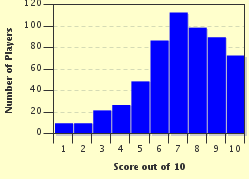Quiz Answer Key and Fun Facts
1. This legendary artist painted "Les Demoiselles d'Avignon", "Guernica", and "The Weeping Woman". But what you might not know was that his birth name was 23 words long. Who is he?
2. If you saw an artist hatching, they are not coming out of an egg, but rather adding what feature to their picture?
3. This museum suffered a massive fire of 1958, one that destroyed the 18 foot original of Monet's "Water Lilies". Which museum was it?
4. During which art movement is somebody likely to find a painting that may teach a moral?
5. You think a man of his nature would not have enough time composing a painting once, but which of his works did Leonardo da Vinci paint twice, almost identically?
6. Considered to be lost, what museum discovered Vincent Van Gogh's "White House at Night" in 1995, and placed it on display?
7. Which of these paintings would be an example of the genre style of art?
8. In 1536, what "youthful" painter was employed as the King's Painter on an annual salary of thirty pounds? Some of his best known works are portraits of Henry VIII and his wives.
9. While critiquing a painting, your friend says there is lots of "negative space" in a painting. What is he talking about?
10. The Rococo art period lasted during which century?
Source: Author
George95
This quiz was reviewed by FunTrivia editor
LadyCaitriona before going online.
Any errors found in FunTrivia content are routinely corrected through our feedback system.


